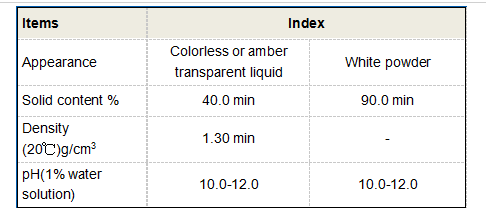different types of flocculants
Different Types of Flocculants
Flocculants are essential chemical agents used in various industrial processes to enhance the sedimentation of particles in liquids. They work by aggregating fine particles into flocs which can then be easily removed from the liquid, a process vital in water treatment, mining, and numerous manufacturing processes. There are various types of flocculants, each with distinct properties and applications.
Different Types of Flocculants
2. Natural Polymers Natural flocculants are derived from organic sources, such as plant or animal materials. Examples include chitosan, which is obtained from crustacean shells, and starch-based flocculants. These materials are biodegradable and less toxic than their synthetic counterparts, making them an attractive option for environmentally-conscious applications. Natural flocculants are often used in food processing and in wastewater treatment where residual toxicity is a concern.
different types of flocculants

3. Inorganic Coagulants Inorganic flocculants, such as aluminum sulfate or ferric chloride, also play a significant role in coagulation processes. They work by neutralizing the charge on suspended particles, allowing them to clump together and settle. Inorganic coagulants are especially effective for large particle sizes and are commonly used in drinking water purification and paper manufacturing.
4. Bioflocculants Recently, there has been interest in bioflocculants produced by microorganisms. These substances are naturally occurring and can efficiently bind together particles in a wide range of environments. Bioflocculants are particularly promising due to their eco-friendly nature and potential for sustainable water treatment solutions.
In conclusion, the choice of flocculant depends on the specific application requirements, such as particle size, turbidity level, and environmental considerations. As industries move towards sustainable practices, the use of natural and bioflocculants is likely to increase, offering effective solutions with a lower environmental impact. Understanding the different types of flocculants can lead to more efficient and responsible water management strategies.
-
Understanding Polycarboxylic Acids: Properties, Applications, and Future PotentialNewsJul.28,2025
-
Scale Inhibitor Explained: How to Protect Your System from Limescale and Hard Water DamageNewsJul.28,2025
-
Scale and Corrosion Inhibitors: Essential Chemicals for Industrial Water System ProtectionNewsJul.28,2025
-
Polyaspartic Acid: A Biodegradable Polymer for Sustainable ChemistryNewsJul.28,2025
-
Isothiazolinones: A Versatile Antimicrobial Class with Industrial Power and Regulatory ChallengesNewsJul.28,2025
-
A Deep Dive into 2-Phosphonobutane-1,2,4-Tricarboxylic Acid (PBTC)NewsJul.28,2025





